I am on my way to the chilli farm and it suddenly occurs to me that I will be walking through polytunnels on the hottest day of the year. How did this happen?
Before we moved to Devon just over two years ago I was growing my own chillies, just experimentally, and increasingly using chillies in cooking, so the news that where I was moving to had an actual chilli farm was quite exciting.
By the time Spring arrived we were well into lockdown, so no visit to any farm was on the cards. By the time lockdown was lifted, the chilli farm was not open to the public and then, later still, I read that the farm was up for sale. There was a very real possibility that I had missed the boat. What if it just went the way of so many other businesses during Covid?
Flash forward to last week when reviewing an old post of mine about Bantham gave me a germ of an idea to produce a series of posts about the small river Avon that runs from Dartmoor to Bantham Bay. The idea was to photograph all of the key points on the river's journey while giving the history of those areas, highlighting interesting things along the route.
That is how I found myself at Topsham bridge near Loddiswell last week, photographing the bridge and then remembering that there was a chilli farm there somewhere. It was already late in the day so I thought I would get home and Google away for the latest on the chilli farm. Did it even still exist?
I love coincidences, so it was remarkable that on that very evening before I had got to Google, Facebook got to, me with the announcement that the new improved chilli farm under new ownership was to open today at 10.am.
Decision made, there I was, arriving on the hottest day of the year not knowing what to expect at a chilli farm, apart from chillies of course.
The South Devon Chilli Farm took me by surprise and I think I took them by surprise. Having all worked very hard to achieve a fantastic looking business which was a joy to visit I got the distinct impression that they were not expecting their first customer to be battering down the door at the stroke of 10. But there I was, camera in hand to receive a wonderful welcome from the new owners, Amrit and Jenny, who told me excitedly that I was in fact just that, their first customer, and their first customer was going to get a free chilli plant of their choice, that was me. I never win anything. So full disclosure, I earned the free chilli plant, it was no bribe, and it didn't affect my rave review of the place. In fact I had secured my prize before I even asked them if it was OK to take the photos.
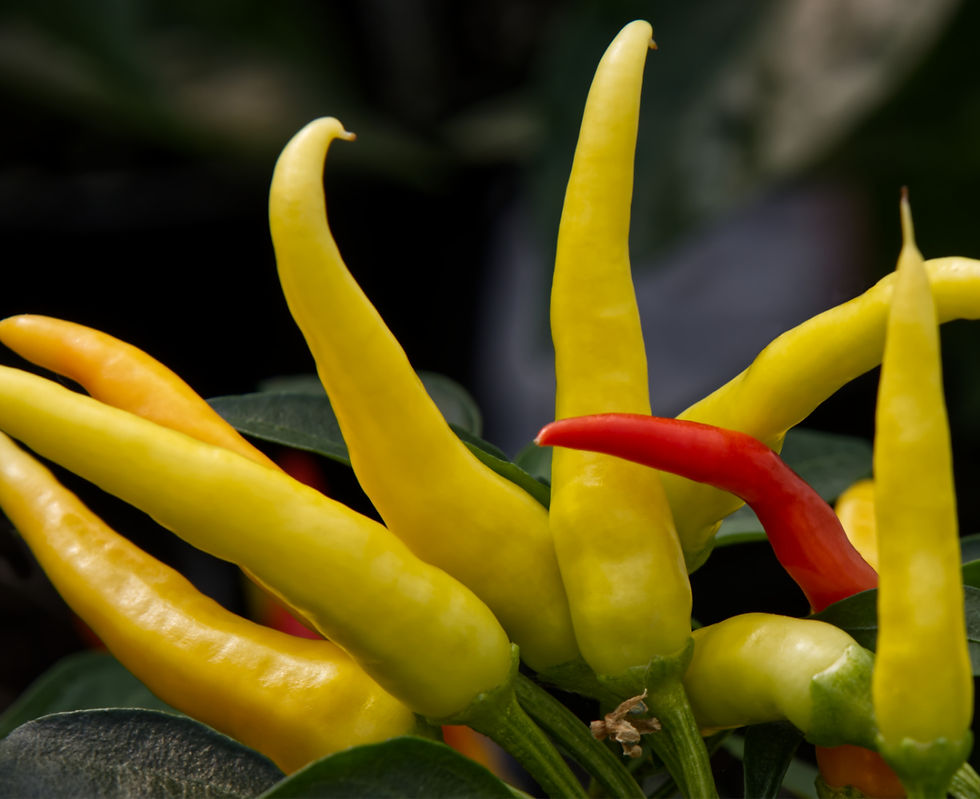
There is an amazing shop selling chilli products made in their own factory here on the farm, a plant sales area, and a show tunnel. They also produce specialist chilli seeds so that you can grow your own. The café is to open soon and the grounds themselves are in a beautiful location. You can also order online from their website at southdevonchillifarm.co.uk

Chilli peppers are varieties of the berry-fruit of plants from the genus Capsicum, which are members of the nightshade family Solanaceae, cultivated for their pungency. Chilli peppers are widely used in many cuisines as a spice to add "heat" to dishes. Capsaicin and related compounds known as capsaicinoids are the substances giving chili peppers their intensity when ingested or applied topically. Wikipedia
Here, coming up, are some of the chilli facts you can find on their very detailed and informative website.
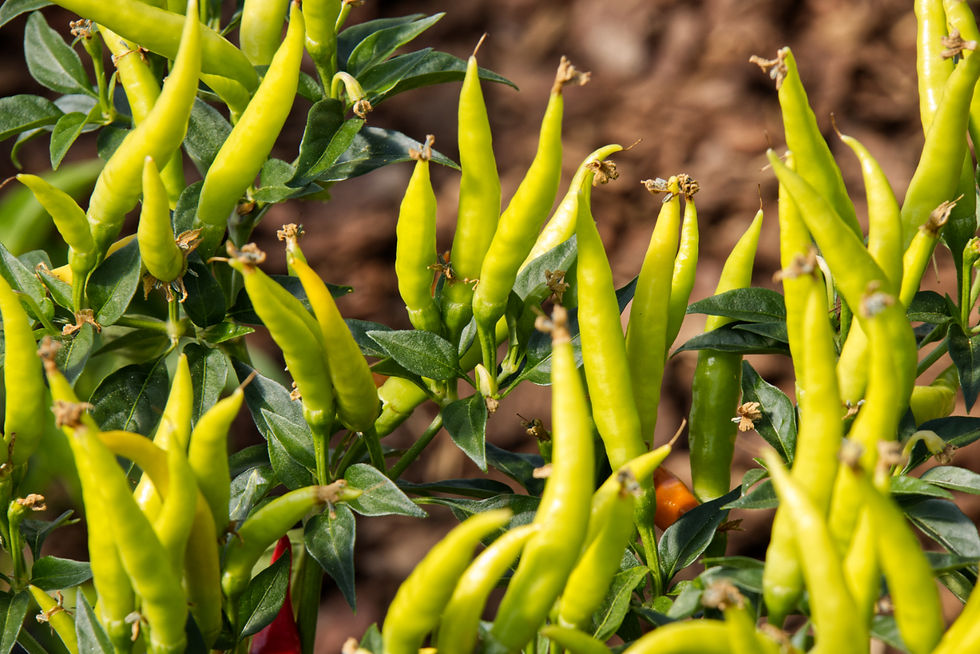
"Chilli" or "Chile" - The choice is yours, "chile" is the more usual spelling in the USA, and "chilli" is generally accepted as the correct UK spelling. You may also see "chili" which is also used in the USA. We have decided to use the UK spelling since that is where we are, but you may occasionally catch us using "chile".
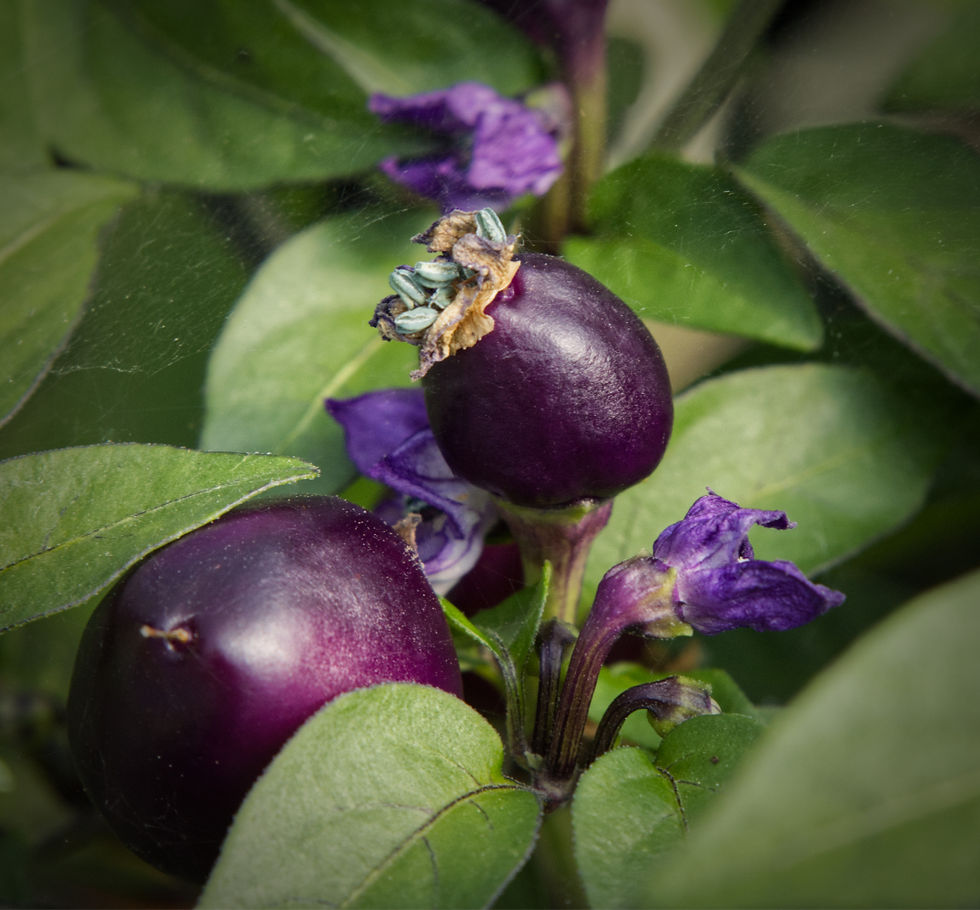
The heat in chillies comes from chemicals called Capsinoids (primarily Capsaicin) of which there are different types, which is why heat from different chillies is felt in different parts of the mouth.

Contrary to popular belief, the capsaicin is not contained in the seeds, but in the placenta, which is the fleshy strip inside the fruit to which the seeds are attached.
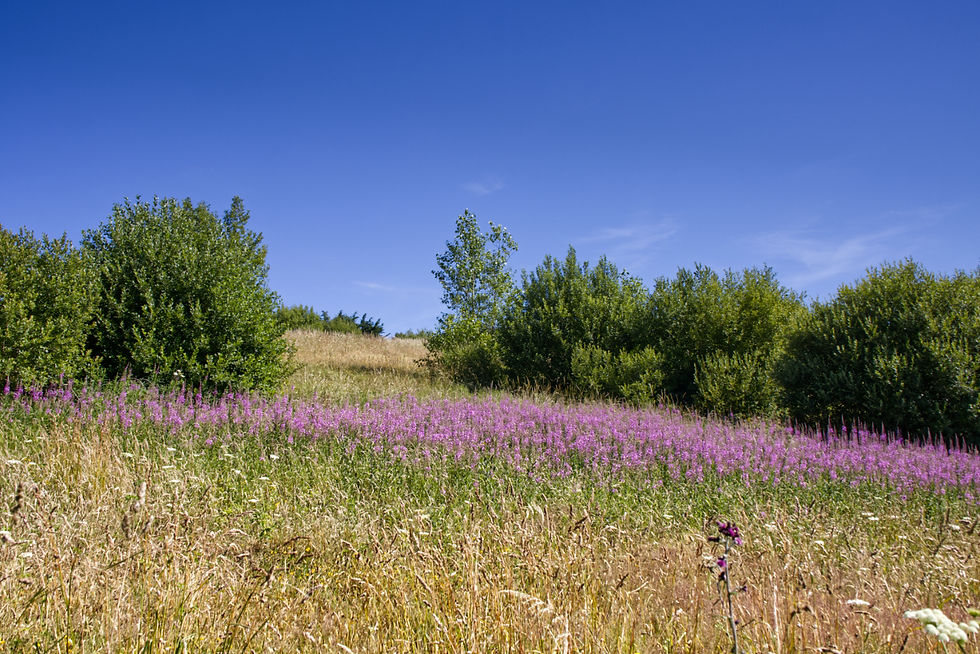
The cells which contain the capsaicin have a high internal pressure so that when the chilli is broken or sliced open they burst, spraying the chemical over the inside of the pod.

Heat is traditionally measured in Scoville Heat Units (SHU), devised by Mr Wilbur Scoville.

The principle was that a whole chilli was blended into sugar water and then diluted until it was no longer detectable by taste. This is a bit of a hit and miss process, so nowadays "Scoville Tests" are done using liquid chromatography and translated back into Scoville Heat Units.
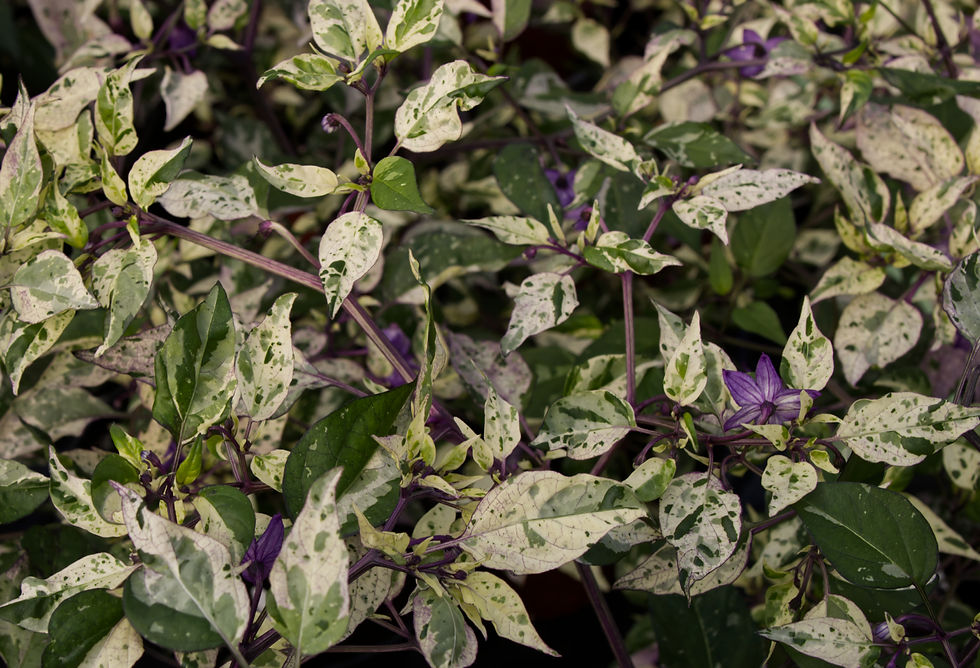
The best antidote to heat is either patience, or a dairy product such as milk or yoghurt. Try to hold the yoghurt in your mouth for as long as possible before swallowing.

Drinking water or beer does not help as they wash the heat further into your taste buds.

Chillies have a range of uses depending on their size, colour, fleshiness, flavour.
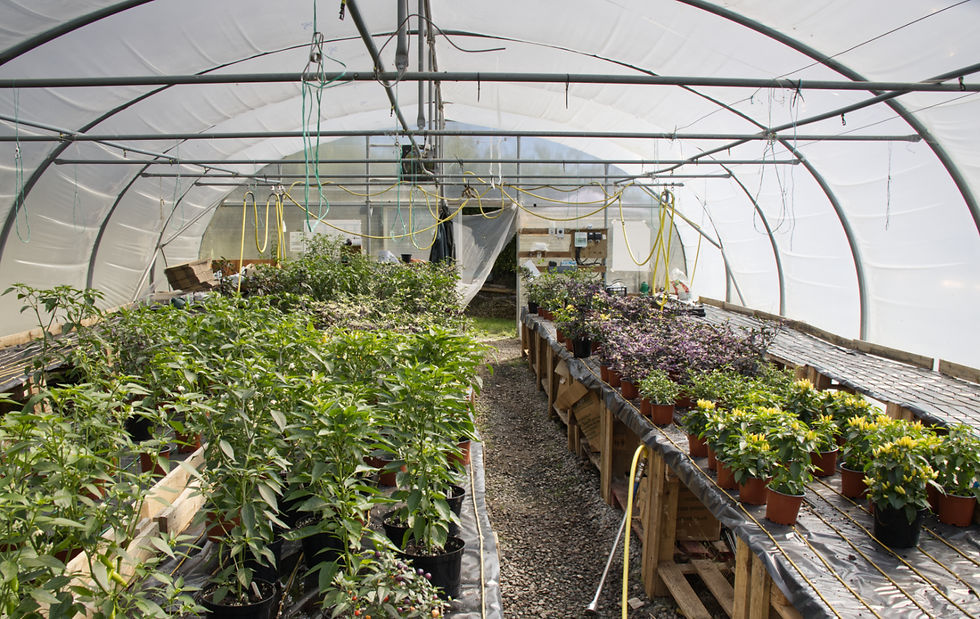
The flavours that chillies develop when dried is always surprising us! When tasting a fresh chilli, it is difficult to predict the amazing flavours that develop during the drying process!
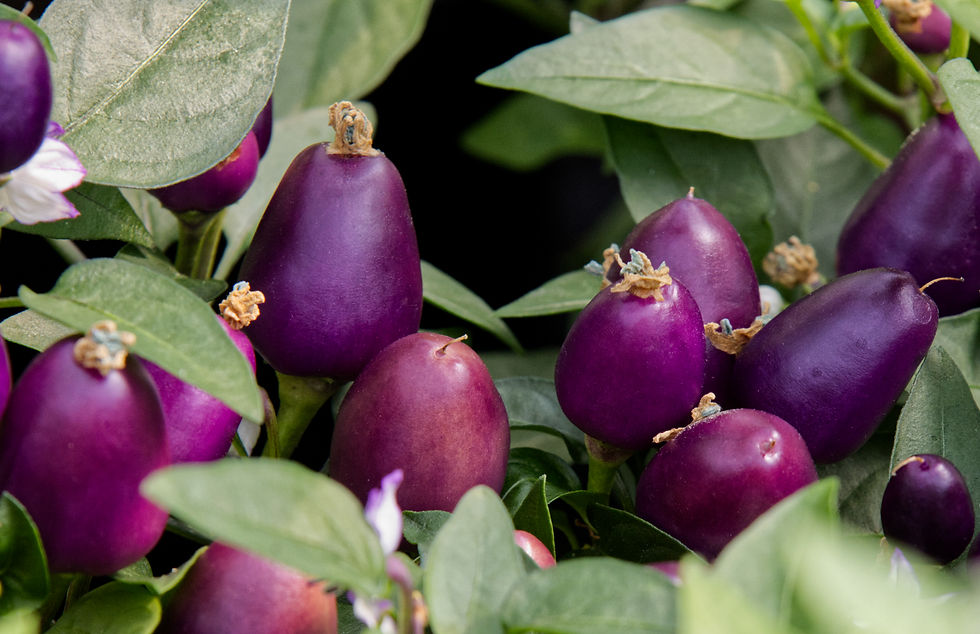
Dried chillies can be reconstituted by covering them in boiling water and leaving them to stand for 20 minutes or so.
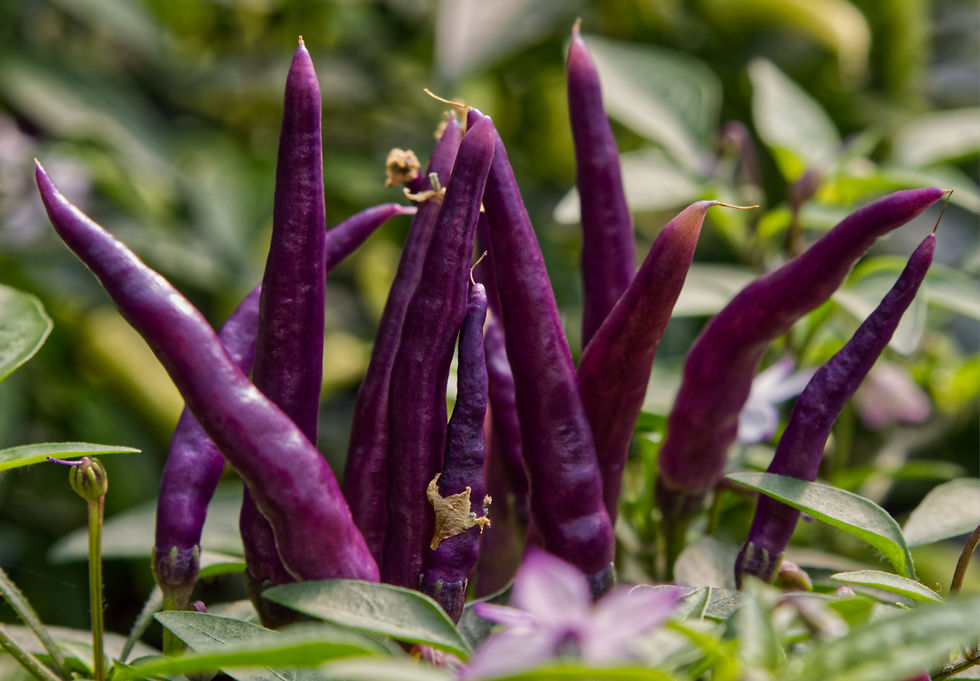
Drying chillies that you have grown is a great way to store them (ideally in a jar or tin, and in a dark, cool cupboard) and they will develop great flavours as they dry.
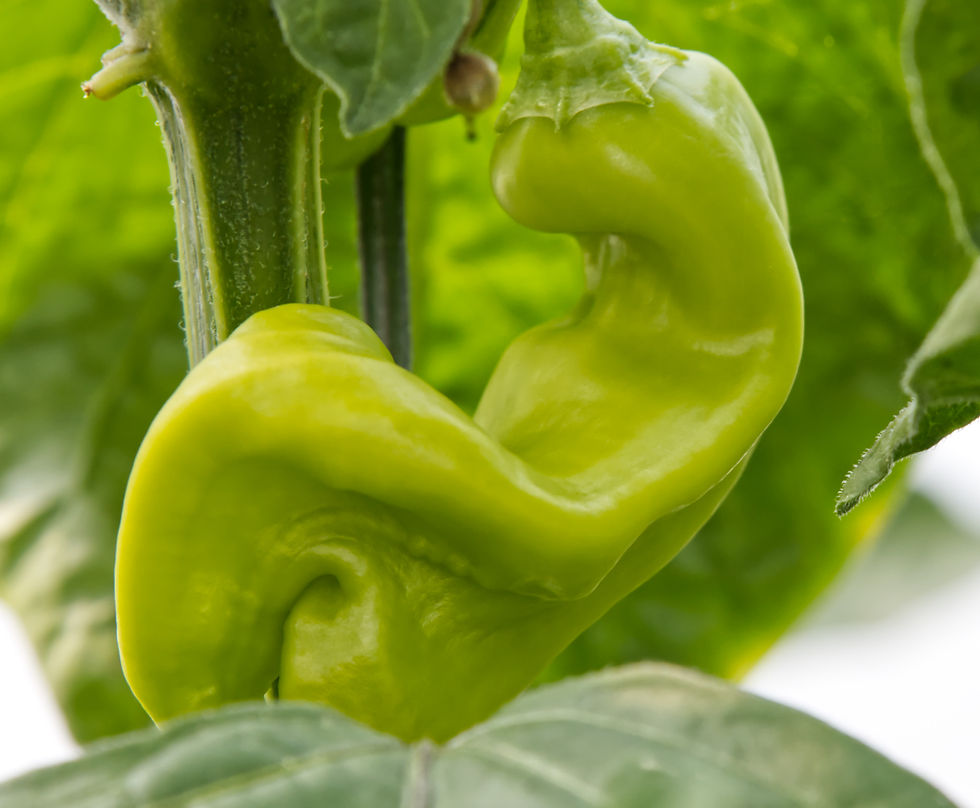
Bhut Jolokia (also known as Ghost or Naga) Heat level: Extremely Hot. This was the first chilli to record a heat level of over 1 million Scoville Heat Units (SHU), this chilli should be handled with care, literally !! This chilli held the world record for hottest chilli in the World between 2007 and 2011.
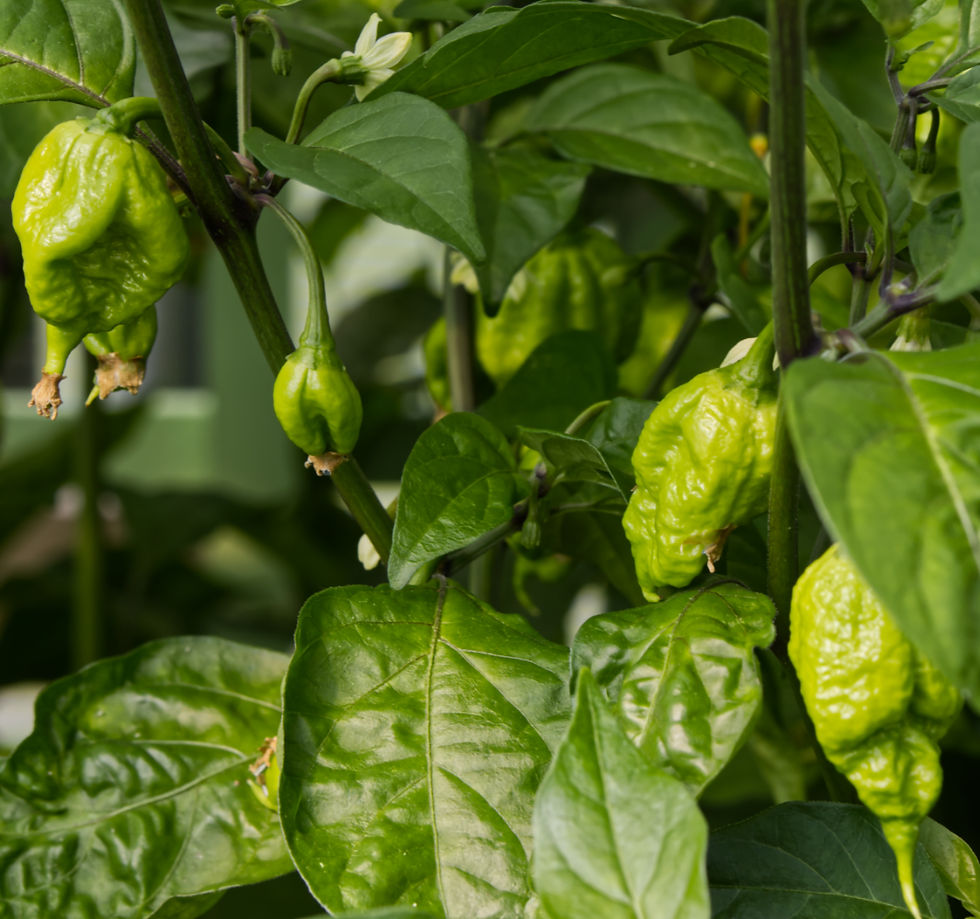
As of 2013, hot sauce production and sales were among the fastest growing industries in the US, worth an estimated US$1 billion. Wikipedia
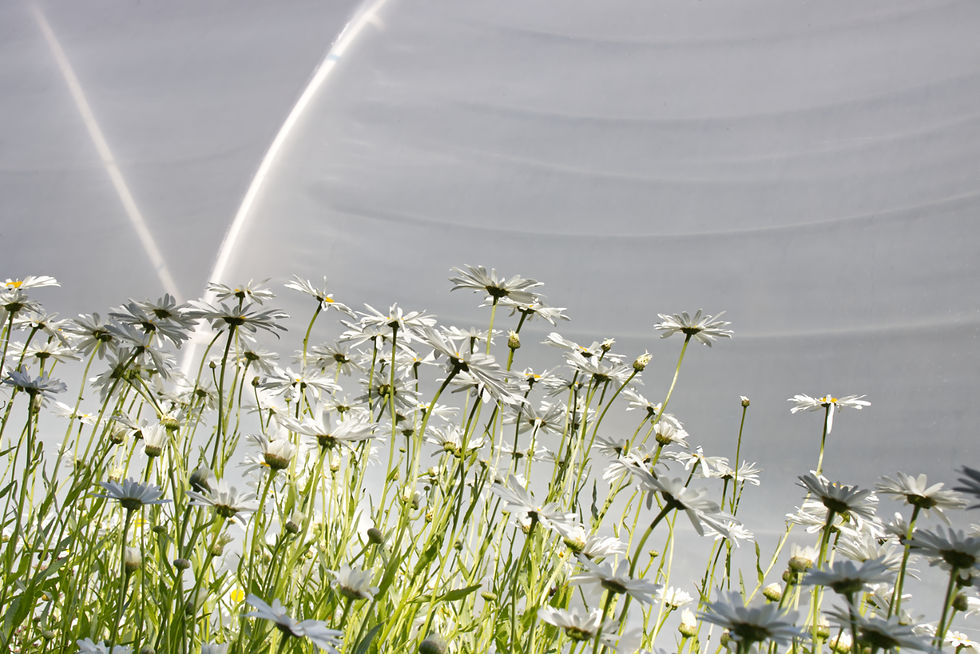
Chilli peppers originated in Bolivia and were first cultivated in Mexico. They are one of the oldest cultivated crops in the Americas. Origins of cultivating chilli peppers are traced to east-central Mexico some 6,000 years ago. Wikipedia
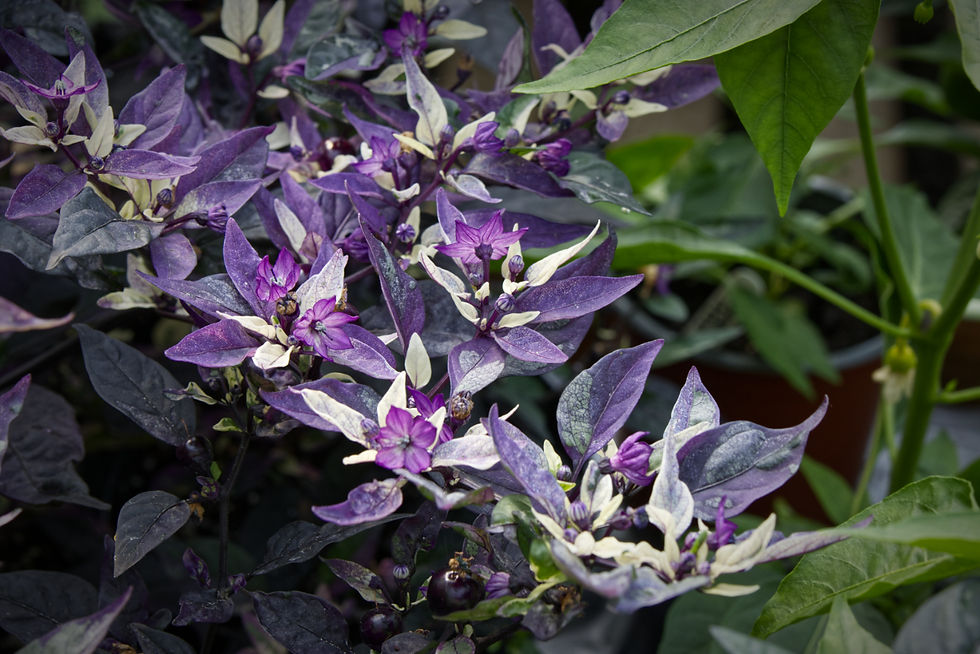
Peru has the highest variety of cultivated Capsicum diversity because it is a centre of diversification where varieties of all five domesticates were introduced, grown, and consumed in pre-Columbian times.
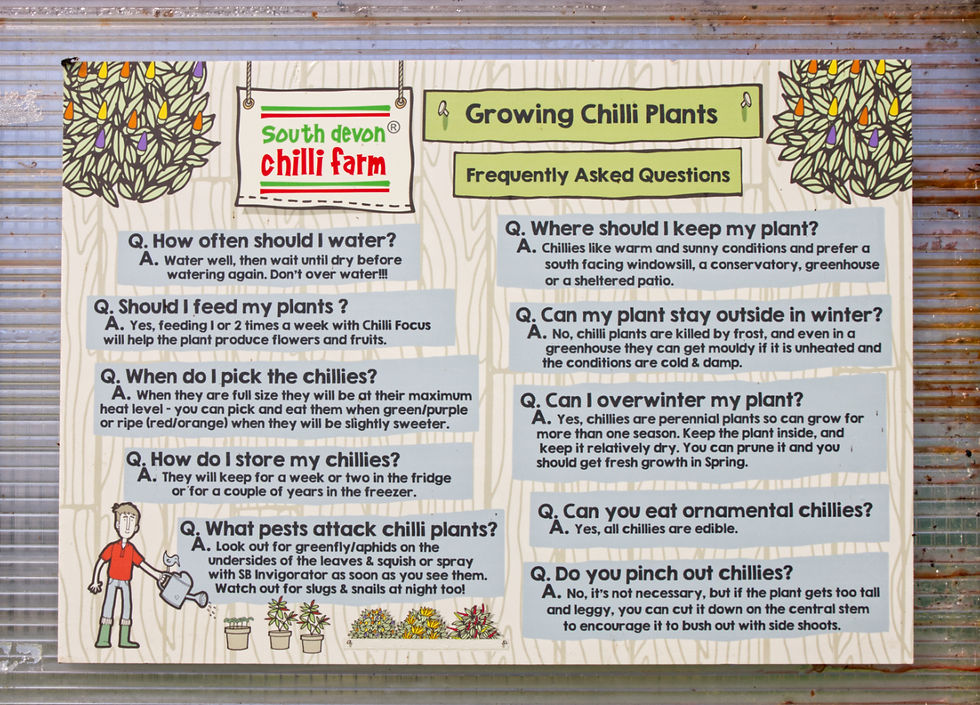
When Christopher Columbus and his crew reached the Caribbean, they were the first Europeans to encounter Capsicum. They called them "peppers" because, like black pepper of the genus Piper known in Europe, they have a spicy, hot taste unlike other foods. Wikipedia

Chili peppers spread to Asia through its introduction by Portuguese traders, who – aware of its trade value and resemblance to the spiciness of black pepper – promoted its commerce in the Asian spice trade routes. Wikipedia

Capsicum chinense includes the hottest peppers such as the Naga, Habanero, Datil and Scotch bonnet. Wikipedia

Capsaicin is produced by the plant as a defence against mammalian predators and microbes. Wikipedia

Chillies are present in many cuisines and include many classics such as arrabbiata sauce, paprikash, chiles en nogada, jerk chicken, mole poblano, nam phrik, 'nduja, sambal, and som tam. Wikipedia
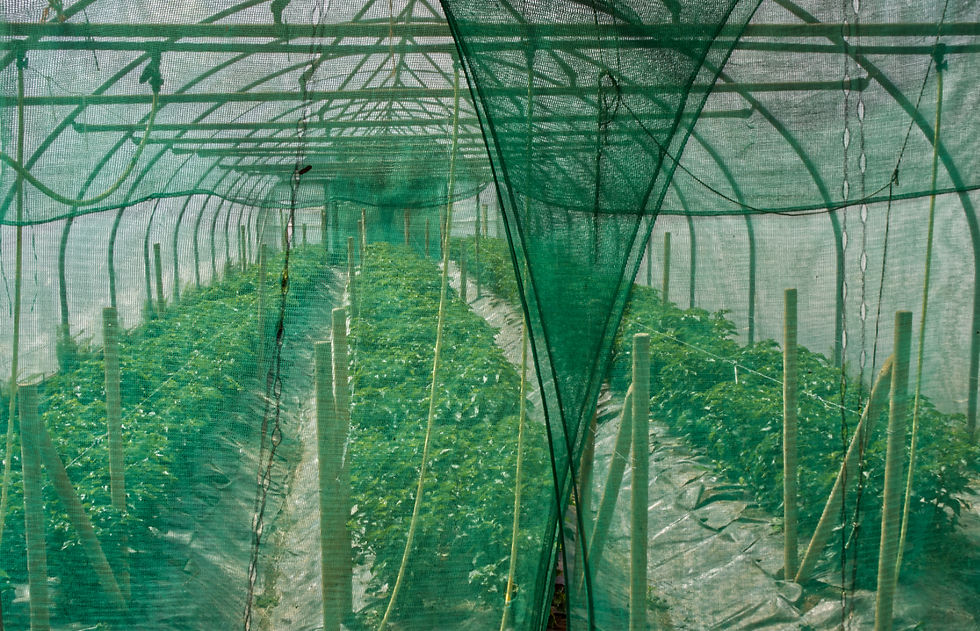
In India, most households always keep a stock of fresh hot green chilies at hand, and use them to flavour most curries and dry dishes. It is typically lightly fried with oil in the initial stages of preparation of the dish. Wikipedia
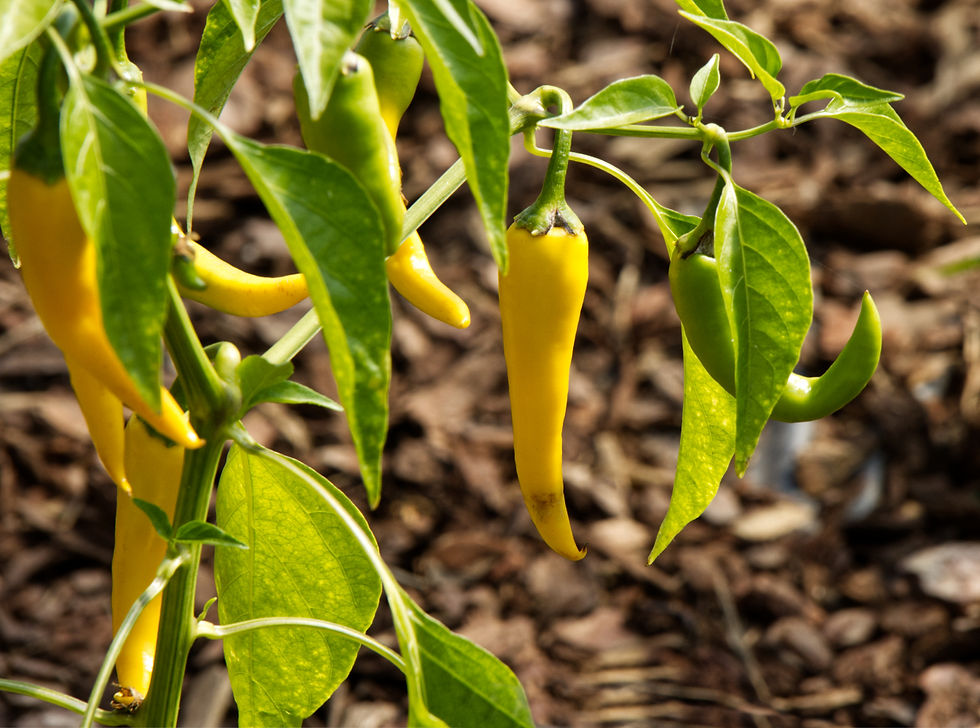
Chilli is a staple fruit in Bhutan. Bhutanese call this crop ema (in Dzongkha) or solo (in Sharchop). The ema datshi recipe is entirely made of chili mixed with local cheese. Wikipedia

Psychologist Paul Rozin suggests that eating chillies is an example of a "constrained risk" like riding a roller coaster, in which extreme sensations like pain and fear can be enjoyed because individuals know that these sensations are not actually harmful. Wikipedia

This is the show tunnel below.

If you think these unusual chillies below resemble tomatoes in appearance you would be on to something. Tomatoes, potatoes, eggplant and bell and chilli peppers are all related. In fact if you have grown any of these you will also recognise the flowers as being very similar.

Capsaicin, the pungent chemical in chili peppers, is used as an analgesic in topical ointments, nasal sprays, and dermal patches to relieve pain. Wikipedia

Capsaicin extracted from chillies is used in pepper sprays and some tear gas formulations as a chemical irritant, for use as less-lethal weapons for control of unruly individuals or crowds. Wikipedia

This seeming queue of deserted brides at a church on a Sunday afternoon is actually a group of chillies being grown for their seeds. The "mosquito nets" are to stop insects cross pollinating the different varieties so that the seeds grow true to the mother plant.
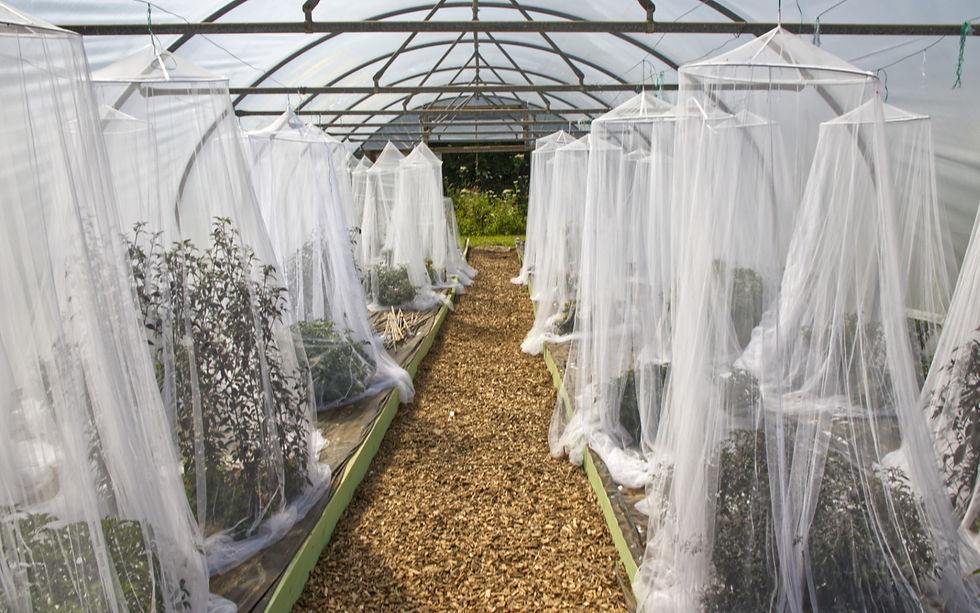
Farmers in Africa have found the use of chillies effective in crop defence against elephants. Elephants do not like capsaicin. Because the elephants have a large and sensitive olfactory and nasal system, the smell of the chili causes them discomfort and deters them from feeding on the crops. By planting a few rows of the fruit around valuable crops, farmers create a buffer zone through which the elephants are reluctant to pass. Wikipedia
It definitely works because there were no elephants to be seen anywhere at the farm.

Birds do not have the same sensitivity to capsaicin, because it targets a specific pain receptor in mammals. Chilli peppers are eaten by birds living in the chilli peppers' natural range, possibly contributing to seed dispersal and evolution of the protective capsaicin in chili peppers, as a bird in flight can spread the seeds further away from the parent plant. Wikipedia
It is an irony of the quirkiness of us humans that a plant defence that is meant to deter us mammals from eating the plant has in fact resulted in us being the most prolific seed spreaders of all, as chillies have now taken over the entire planet and we are not just farming the fruits but also those very seeds themselves.
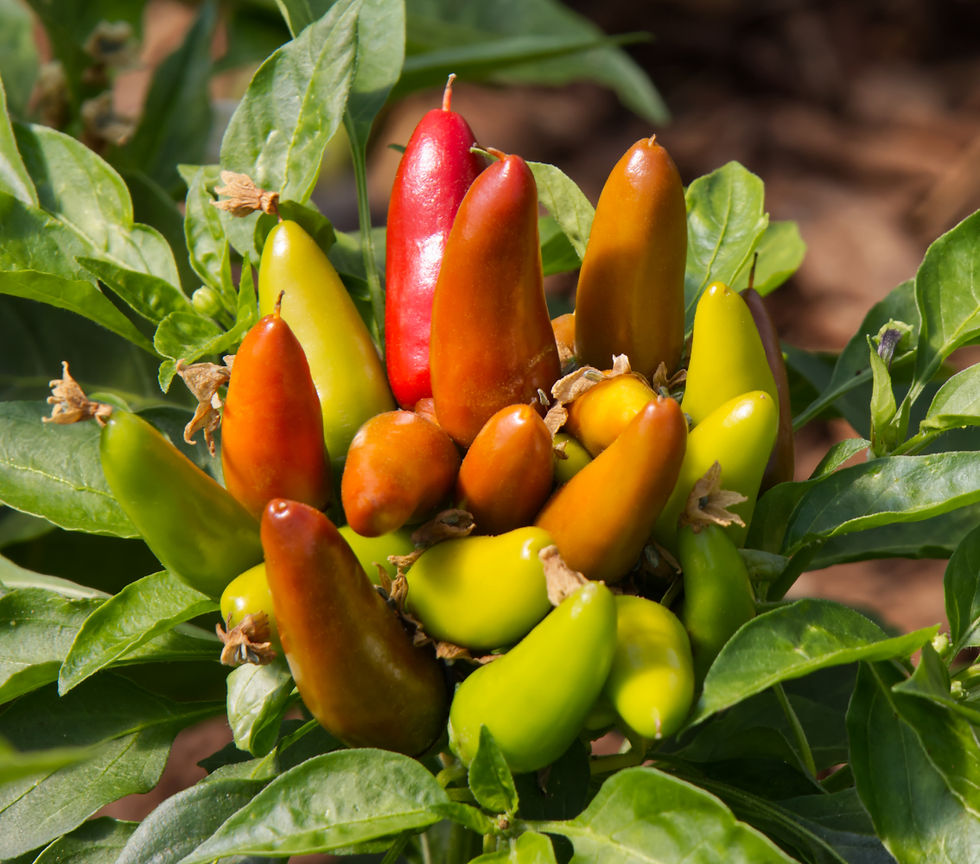
In a 100 gram reference amount, chili peppers supply 40 calories, and are a rich source of vitamin C and vitamin B6. Wikipedia
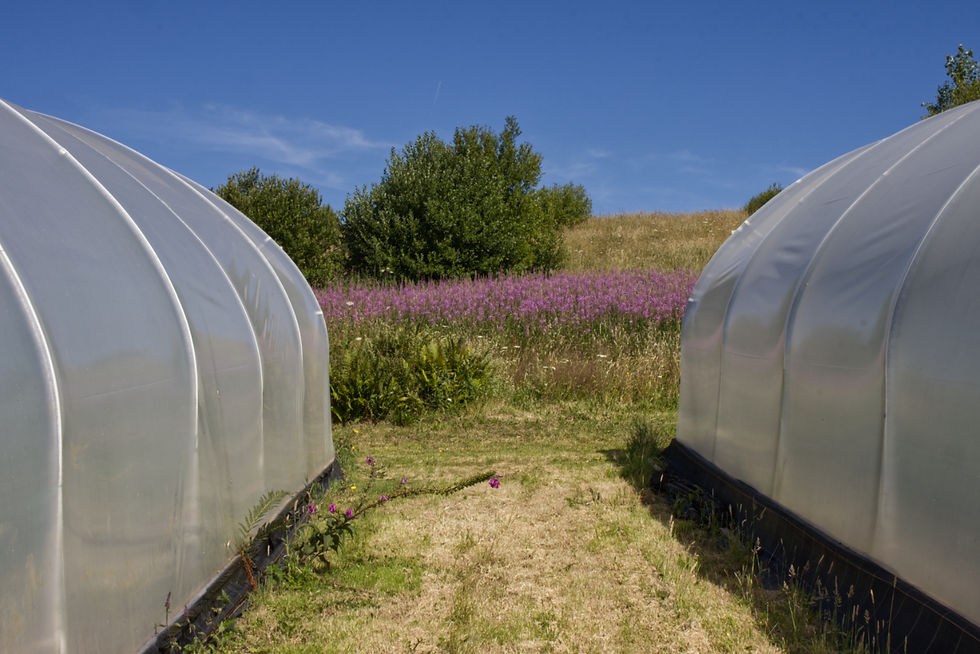
Wilbur Lincoln Scoville was an American pharmacist best known for his creation of the "Scoville Organoleptic Test", now standardized as the Scoville scale. He devised the test and scale in 1912 while working at the Parke-Davis pharmaceutical company to measure pungency, "spiciness" or "heat", of various chili peppers. Wikipedia

Especially among growers in the US, the UK, and Australia, there has been a competition since the 1990s to grow the hottest chili pepper. Chili pepper species and cultivars registering over 1,000,000 Scoville Heat units (SHU) are called "super-hots". Wikipedia

Before the early 1990s, there were only two peppers which had been measured above 350,000 SHU, the Scotch bonnet and the habanero. California farmer Frank Garcia used a sport of a habanero to develop a new cultivar, the Red Savina, which was measured at 570,000 in 1994. At the time, this was considered to represent an upper limit of chili pepper hotness. Wikipedia
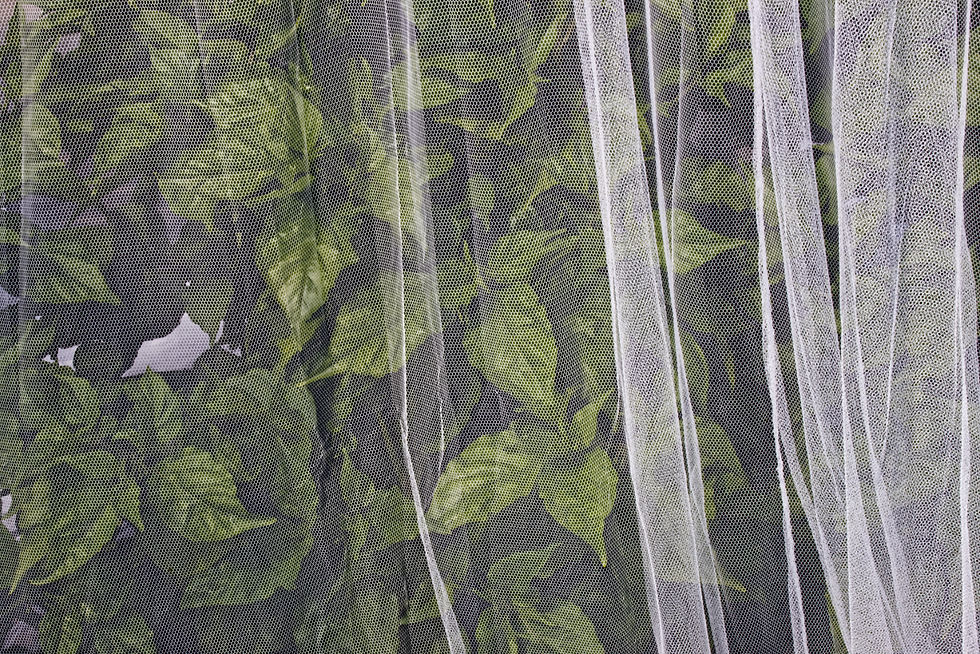
In 2001, Paul Bosland, a researcher at the Chile Pepper Institute at New Mexico State University, visited India to collect specimens of ghost pepper, also called the Bhut Jolokia or Naga king chili, traditionally grown near Assam, India, which was being studied by the Indian army for weaponization. When Bosland grew and tested the pepper, he discovered it measured over 1 million SHU. According to Bosland, this "kind of opened the floodgates" Wikipedia
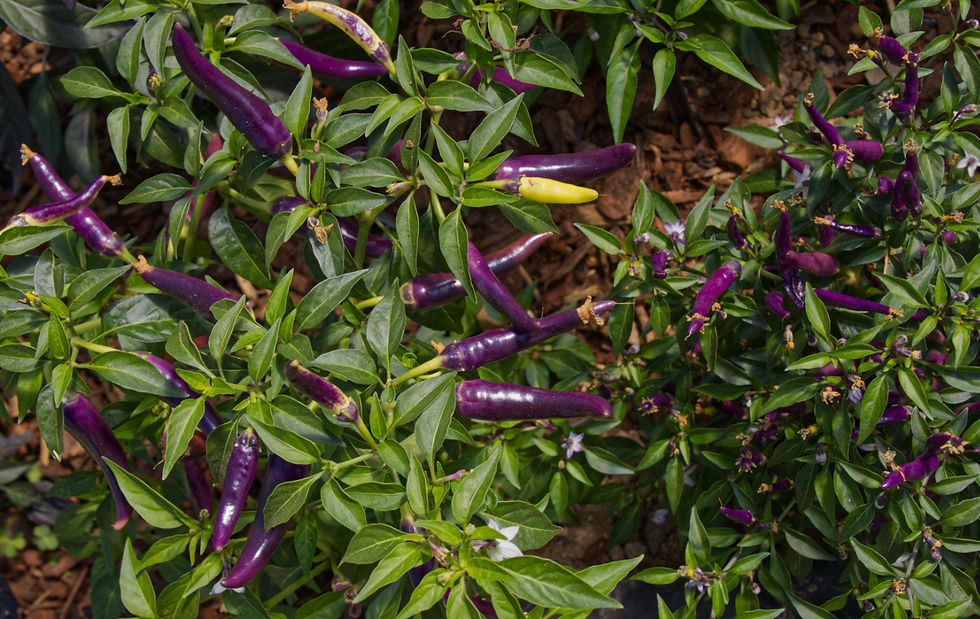
In 2006, the Dorset Naga (a subspecies of the Naga Morich) was claimed to be the hottest. Wikipedia

In 2012, the Chilli Pepper Institute called the Trinidad Moruga scorpion the new hottest pepper, saying it had been measured at 2 million SHU, the first time the 2-million mark had been reached. Wikipedia
The polytunnels are deliberately positioned along a gentle slope, the effect being for the heat to naturally funnel out of the upper end, and to draw fresh air in at the bottom, keeping the area well ventilated. If placed on the flat, fans would be needed. It did mean that standing here and looking in to one of the closed tunnels was like standing in front of a massive hair dryer. The temperature and speed of the hot air escaping was extraordinary.
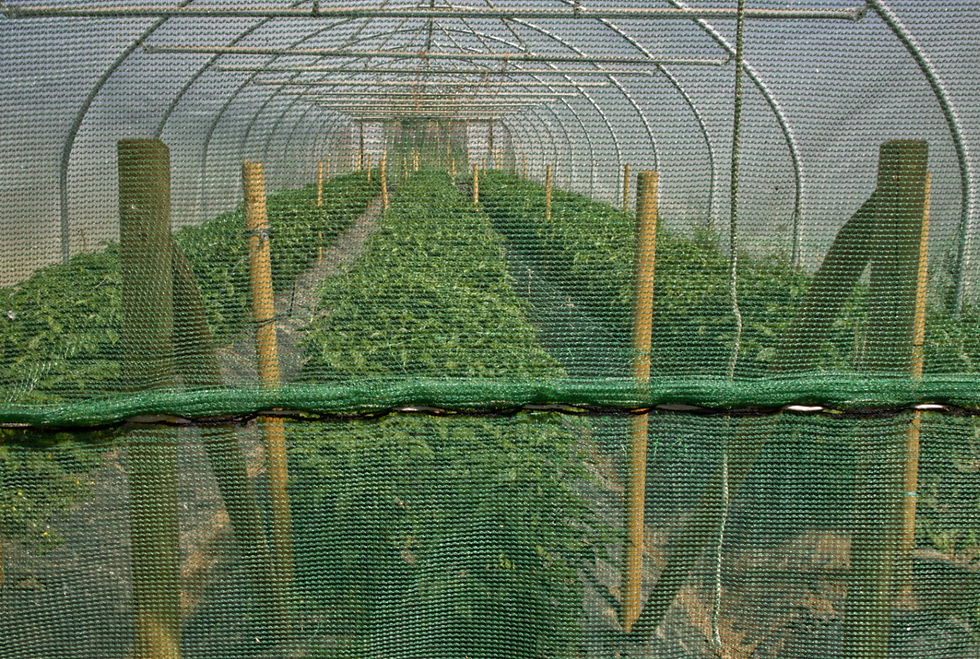
I am still planning to do my series of posts on the river Avon and I will mention chillies in that story, but having been captivated by what I saw today I wanted to do a separate post now, just about the farm and to take this opportunity to wish them all the best for the new business.
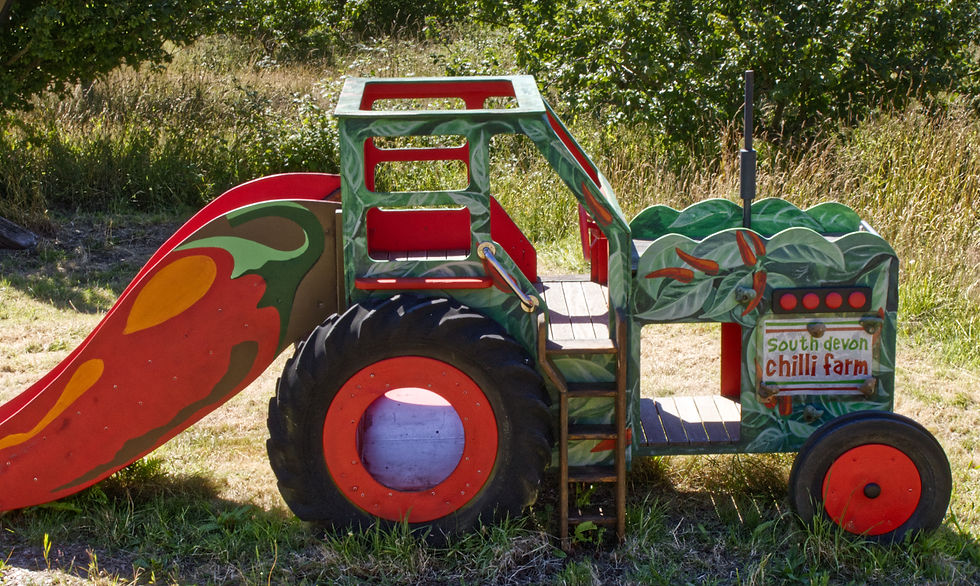
What a great place! Excellent reportage! I miss my chili plants from my garden in Charlotte, NC. I had 12 varieties, all of which I allowed to be open pollinated, so you never knew what level of heat you would get from any particular fruit. What fun that was! I can't go a day with out so heat in my food - if it don't make your head sweat, it cain't be no good.
❤❤
One of those posts that requires me to respond to some of the paragraphs/ideas before moving on.....😁
What a cool expressiong "germ of an idea"not one found here but one I like 😉
"it was remarkable that on that very evening before I had got to Google, Facebook got to, me....." (who's being tracked 😁😁)
Rolling back up⬆
"free chilli plant" They say the early bird gets the worm. You done got the worm 😁(how's that for hick English?)😎
Rolling back up⬆
"Paul Rozin suggests...." I totally agree with him...love the heat and what it does to my mouth.
"Show Tunnel" another one of those words not used here....greenhouse or hoop house😏
Rolling back up⬆
"there were no elephants…
looks and sounds like an amazing place